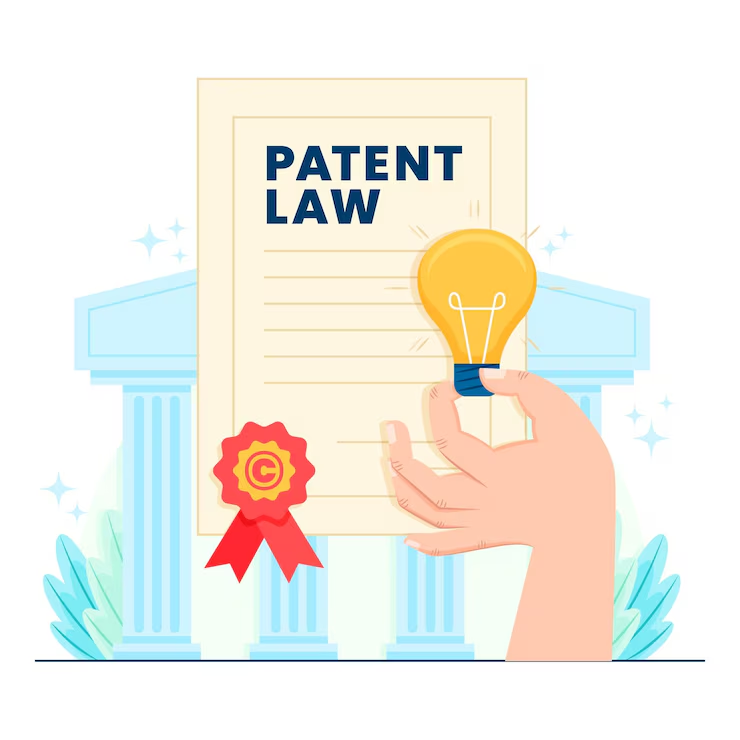Patent Attorneys
Expert Patent Attorneys in Melbourne – Patent Application Services & Registration Across Australia
Protect Your Invention with a Patent
Secure exclusive rights to your innovation with strategic patent protection.
A patent is a form of Intellectual property (IP) for protecting an “invention”. An invention can be a new product, device, apparatus, process, method, system, etc, and sometimes a combination of these.
What is a patent?
A patent is a form of Intellectual property (IP) for protecting an “invention”. An invention can be a new product, device, apparatus, process, method, system, etc, and sometimes a combination of these.
An Australian patent gives the owner of the patent (“patentee”) the exclusive right in Australia to commercially exploit the invention (i.e. to make it, hire it, sell it, use it, import it, etc.). A patent can give the patentee the right to stop somebody else from infringing the patent, and the patentee may be able to claim monetary compensation from that person or company for infringement that has occurred.
The invention is described in a document which accompanies the patent, and which is known as a patent specification. This is both a technical and legal document that describes the technical features of the invention.
Proper drafting of a patent specification is critical for achieving effective and legally valid protection of the invention, and involves a high degree of training, skill, experience, and attention to detail. Preparing patent specifications is one of the core aspects of a patent attorney’s work.
Why Patent Protection Matters
Patents play a crucial role in helping businesses and individuals safeguard their innovative ideas. Whether you’re launching a new product or developing cutting-edge technology, obtaining patent protection can give you a competitive edge, deter copycats, and build long-term commercial value.
- Exclusive rights to your invention
- Commercial advantage over competitors
- Prevent others from copying your innovation
- Monetize through licensing or selling
- Increase business valuation
- Global protection opportunities


Importance of Proper Drafting
Apart from the fact that a patent could serve as an effective deterrent against copying of the invention by other people, it can also be used as part of a business’s overall IP strategy. A patent is an asset, and can be assigned (transferred) or licensed to others.
For many businesses, their patent or patents are critical to their ability to continue operating and to compete. Indeed, many businesses are built largely around their patent protection.
"The quality of your patent specification can make or break your protection — leave it to experienced patent attorneys."
Patent searches
Having suitable searches conducted can be an important aspect of the patent application process. The question of whether or when to have search conducted, and the type of search, may depend one’s overall patent strategy.
Click here to find out more.
Is It Worth Applying for a Patent?
The expected cost of the patenting process (i.e. applying for, and obtaining, a patent) and the cost of marketing the invention, should be weighed against the expected profits or commercial benefit that can be derived from the invention or patent. There are various options in the patent application process that can assist in controlling the costs, or deferring large portions of the costs. This can provide a way to assess the commercial viability of an invention or generate income from the invention while limiting expenditure.

Frequently Asked Questions (FAQs)
What exactly is a patent?
A patent is a form of legal protection for an invention. It gives you the exclusive right to commercially exploit your invention for a certain period of time.
What types of inventions can be patented?
You can patent new products, methods, processes, systems, devices, or improvements to existing ones—as long as they are novel, inventive, and useful.
What is the difference between a standard patent and an innovation patent?
A standard patent offers long-term protection (up to 20 years) and is suitable for more complex inventions. Innovation patents (now discontinued for new filings in Australia) offered shorter-term protection with faster approval but less rigorous examination.
How long does it take to get a patent?
The process can take anywhere from 6 months to several years depending on the complexity of the invention, the patent office’s backlog, and whether examination is requested early.
Can I apply for a patent internationally?
Yes, you can apply for patent protection in other countries. This is usually done through the Patent Cooperation Treaty (PCT) or by filing directly in each country.
Ready to Protect Your Idea?
Contact us to discuss your invention, strategy, and options for patent protection.
Serving innovators across Victoria and Australia.
